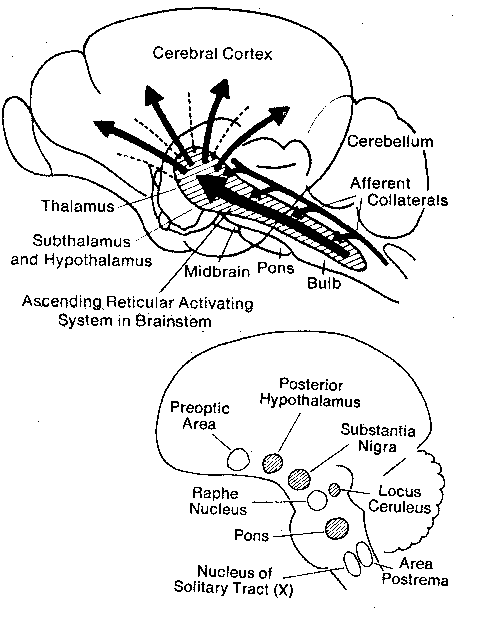Reticular activating system
From Psy3242
[Image:  ]
]
Contents |
Overview
The (ascending) reticular activating system (ARAS) or reticular formation is a structure that sits between the medulla oblongata and midbrain and branches into the brain stem. [1] This system dictates the level of arousal or consciousness for the cortex. Sensory and motor impulses travel in between the cerebral cortex, the thalamus, and the RF; this process influences the degree of alertness (or sleep) in a person (Stirling 8) as well as circadian rhythms, respiration, and heartbeat patterns. [2]
Relation to ADD/ADHD
Motivation and the Yerkes-Dodson Law
The ARAS/RF is directly related to arousal and motivation which are, in turn, related to ability to perform tasks. How well these tasks can be performed is often represented by the inverted U-function (or the Yerkes-Dodson law) which depicts that performance peaks at a certain level of arousal and then deteriorates if that arousal continues to increase because of the associated stress and agitation of being too aroused [3].
Dr. Harris talked to us about this is Stats II last semester when he was describing his early/late day arousal, caffeinated/non-caffeinated performance study. People who were at their peak arousal during a certain time of day performed best at that time (as expected), but their performance deteriorated as they consumed caffeine and actually became overly-aroused. However, caffeine could also be used to increase performance in those who weren't testing during their peak arousal times.
References
Motivation - The inverted-U function
Stirling, John. Introducing Neuropsychology. New York: Psychology Press, 200
